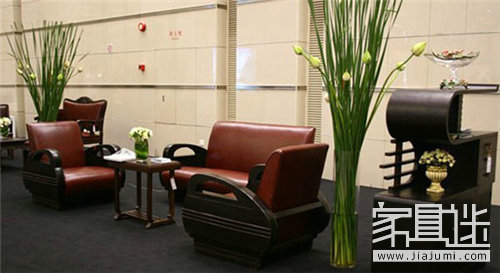Shanghai-style furniture, often referred to as "Old Shanghai Furniture," is a unique blend of Western and Chinese design that emerged and flourished in Shanghai between 1843 and 1949. It includes Western-style furniture imported into the city, modern furniture produced during the 1920s and 1930s, and the distinctive "Attic" style that became popular in the 1930s and 1940s. This style is distinct from traditional Chinese furniture and reflects the cultural fusion that took place in Shanghai during this era.
As American scholar Rhodes Murphy once noted, “Shanghai is a place where two civilizations meet, but neither of them is dominant.†After the 1930s, Western and Chinese furniture coexisted, each developing its own identity. On one hand, Western-style furniture adapted local production techniques in Shanghai’s workshops, while on the other, Chinese craftsmen began to innovate by imitating Western styles, creating a unique hybrid aesthetic.

**Historical Origins**
**1. Emergence in the 1920s**
Before the opening of Shanghai, Western furniture was primarily found in Beijing, brought in by foreign envoys. Following the Treaty of Nanjing in 1843, Shanghai opened up, and the UK, US, and France established concessions along the Bund and Xujiahui. Foreigners flocked to the city, transforming it from a small county seat into China's largest commercial hub. Western-style buildings and furniture soon followed, first appearing in foreign consulates, companies, and among wealthy compradors.
These early Western-style pieces were luxurious, large, and finely crafted, featuring Baroque, Rococo, and Classicism styles. They came in English, French, Spanish, and Jewish variations, typically made from mahogany and oak.
By the 1920s, the New Cultural Movement and the National Revolution inspired Chinese people to adopt Western lifestyles, including fashion and home decor. The middle class and intellectuals in Shanghai began to embrace Western-style homes and furniture, with many imitating Neoclassical designs. Teak from Thailand and India became popular materials for these reproductions.
In the 1930s, Western-style furniture started to enter more households. Buying furniture and cars became a major household investment. Wealthy families favored rich styles with floral carvings, often using rosewood (known as "fragrant mahogany") in a Western-inspired design. This marked the birth of what we now call "Shanghai-style furniture."
In 1932, Yilin Furniture Store on Xiafei Road (now Huaihai Road) introduced a new approach. Owned by Zhong Huang, a Frenchman, the store began using plywood instead of solid wood and restructured furniture, moving away from simple imitation toward a streamlined, distinctly Chinese-influenced style. This innovation introduced multi-colored finishes, metal handrails, and dark hinges, making Shanghai-style furniture more modern and visually appealing.
**Related reading:** Characteristics of the National Style

**2. Maturation in the 1930s**
Throughout the 1930s, the continuous refinement of Western-style furniture stores helped mature the Shanghai-style furniture industry. Key characteristics include:
- **Structural innovation**: Use of frames and modern hardware for assembly.
- **Cultural fusion**: A mix of Chinese and Western styles, with furniture feet and designs influenced by both traditions.
- **Functional variety**: Including three-door cabinets, mirrors, wardrobes, dressing tables, glass cabinets, and window seats. Beds transitioned from single to double-sided.
The use of modern industrial materials, such as veneered wood, emphasized comfort, practicality, and luxury. Many furniture companies also offered interior design services. For example, Jingyi Furniture Store would send designers to measure homes and create detailed plans before selecting materials. Huaxin Woodware Co., Ltd., founded in 1919, even decorated famous cinemas like Cathay Pacific and Shanghai Concert Hall, showcasing the high level of craftsmanship in Shanghai's furniture industry.
**3. Peak in the 1940s**
The 1940s marked the golden age of Shanghai-style furniture, driven by advances in industrial technology. This period saw the rise of Art Deco-inspired "Attic" style, characterized by sleek lines, compact designs, and decorative elements. Materials such as teak, Liuan wood, and plywood were commonly used, and furniture was designed with both function and aesthetics in mind.
This style became a classic representation of Shanghai furniture, and even today, its influence can still be seen in modern design trends.
Charcoal Stove,Wood Fire Stove,Beach Fire Ring,Patio Grill
JIANGMEN XINXIN METAL PRODUCTS CO., LTD. , https://www.bbqoutdoorgrill.com